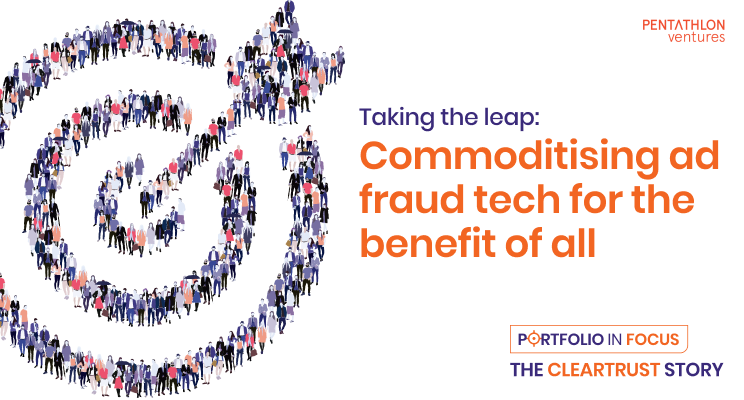When the folks at ClearTrust mapped their product journey, adopting an API-first approach made sense. This was a calculated risk. The 2020 year startup is working in an industry (cybersecurity) that is fast gathering pace. And ClearTrust wanted to ensure that ad fraud detection is adopted at scale.
But what’s the scope of the problem?
As spending on digital advertising continues to soar, concerns about leakages and losses due to bot traffic are growing. Estimates suggest that companies may lose between $5 billion and $7.2 billion to bot traffic. However, determining the exact figure is challenging because website traffic is so diverse. Additionally, there’s an unspoken rule among players in the industry to stay quiet about Invalid Traffic (IVT).
If IVT isn’t detected and stopped, it can lead to ad fraud. ClearTrust offers technology that identifies IVT, helping companies protect their investments and avoid wasting resources.
The people who are interested in tackling this problem are people cutting the cheques for these spends: CMOs and other C-suite executives who want real RoI on ad spend.
Adopting a PLG strategy
Deeps Biswas (Deepankar), the founder of ClearTrust, is the first to admit that ad fraud detection software isn’t exactly an innovation now. There are multiple players in the market, and services are pretty standardised.
The team realised that ad fraud detection was well on its way to becoming a commodity. They also realised that to disrupt that market, they needed adoption at scale. This meant getting ad fraud detection into the hands of people and democratising its use.
ChatGPT’s record-shattering adoption (100 million users two months after launch!) is just the latest proof of the wonders massive product adoption can work for a company. The team arrived at this decision using Wardley Maps, a decision-making framework that was taught to them at an accelerator programme.
Strategy #1: Open API
For the ClearTrust team, one strategy to ensure adoption at scale was to adopt an Open API strategy. This was also inspired by Ubuntu being released as an open-source software, which contributed to its widespread adoption and success.
With Open API, the ClearTrust team hopes to drastically improve access to fraud detection software, differentiating itself from its immediate competition.
Strategy #2: Freemium model
Another strategy in moving towards standardisation and transparency was introducing a freemium model. ClearTrust’s bigger, more established competitors, charge a premium for their services and have a training programme for companies using the product.
Through ClearTrust’s Open APIs, their product is free to scan a certain number of ad clicks, after which they will have to be purchased. Deepankar says the idea is to promote transparency and standardisation in this space.
Their freemium plan is also enough for small-sized companies, who won’t even need to subscribe to ClearTrust’s service. But Deepankar says the small businesses aren’t their customer persona anyway. And increased usage of their product only gets their PLG model going.
“We’re really trying to open up the ad fraud detection space. Our service liberates people from handholding and expensive subscription plans,” he says.
Anyone can draw up an API, plug it in and start using ClearTrust’s product immediately. The ultimate aim is to have more authentic traffic engagement and tackle the spectre of ad fraud.
What is the impact of this decision?
Deepankar says, “After opening up this decision, we have seen welcome comments from the industry players and signups to try this model. New types of media entities such as tracking and analytics platforms seem to be finding a use case for it. It would be a couple of quarters before we can measure it effectively, but but it seems to be flowing in the right direction”.
In retrospect, opening up your product or working to drive adoption at scale seems elementary. But marrying massive adoption with a PLG strategy is a delicate act that’s hard to pull off. It’s easy to talk about driving adoption. But it’s good to take a step back and think deeply about what it really takes to have people adopt your product at scale, and achieve market category leadership in a space.
